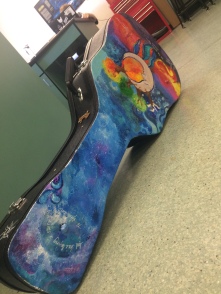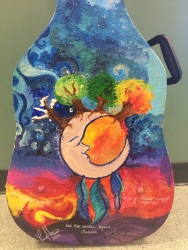
My current favorite sketchbooks: mixed media paper that’s good for all mediums, small size for easy travel, and not too expensive 🙂
If you’re like me, then you’ve gone online and spent a lot of time looking at other people’s art, other people’s sketchbooks, looked around at the artists around you and sighed with discontent at your own, seemingly mediocre, abilities. You’ve bought the professional supplies, admired the art around you, yet you’re discouraged and only willing to draw in that sketchpad when you have “something good.” Sound familiar? Well, thankfully you aren’t alone. The key to having that beautiful sketchbook is just in your grasp, you just have to stop looking in the wrong places.
It isn’t an issue with your skills or your supplies, the number one mistake people make when they start drawing is to only draw when they think it will look good. They want their sketchbooks to be pieces of art and to look as good as the pros’. The mistake? In their admiration, they’ve forgotten that all art takes practice, you don’t get good by only drawing once in a while. I, too, was once guilty of this crime. I wanted my sketchbooks to only show my best works, yet I quickly discovered that this isn’t the point of a sketchbook.
I once read that to get into art school, you should be filling about one sketchbook a month. Art schools don’t just want to see your best works, they want to see how much work you put in. Obviously, I panicked, I barely fill one a year, and although my portfolio is pretty vast, there was so much improvement to be made. But how?
Then I realized, depending on my finished pieces to improve over time was impractical and took far too long. It was time to stop trying to make my sketch book look pretty, and start putting in the time to improving my skills.
And just how did I do it? Well, for starters, I stopped scanning the internet for finished images to copy. I started drawing from life, sketching a lot more cartoons, and spent a lot of time developing some marker skills. The more I drew from my memory and from the world around me, the more my final pieces improved.
And then I discovered the secret to how those artists online improve their skills while still making it “look good”: they don’t. They practice, practice, practice, they don’t care if their sketches are messy, half finished, or inaccurate, all they’re doing is practicing, and that’s the real key to successful art. The more I worked, the less I cared about how my sketches looked, and the more I cared about learning from all my mistakes. That’s what sketchbooks are for: learning.
Your sketchbook is as essential a tool as your favorite pencil and your dominant hand. It serves as a place for your ideas, a layout page for projects, and most importantly, a track of all your progress. You get better by practicing, you practice even after you get better. There are always improvements to be made and your sketchbook is an excellent tool for showing what areas you improved in and what you need to do to improve further.
Happy Sketching!

 My most recent obsession and project is custom painting guitars and guitar cases. Working on canvas is great, sure, but I love the challenge and variety that painting other objects provides. A canvas painting is put on a wall, admired when people are present, and forgotten as soon as they leave the room. A guitar case is carried around, people see
My most recent obsession and project is custom painting guitars and guitar cases. Working on canvas is great, sure, but I love the challenge and variety that painting other objects provides. A canvas painting is put on a wall, admired when people are present, and forgotten as soon as they leave the room. A guitar case is carried around, people see  it, people feel a better connection. Artists are vain, they wan t their art to be seen, appreciated and recognized.
it, people feel a better connection. Artists are vain, they wan t their art to be seen, appreciated and recognized.


